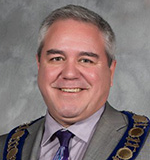2019 Northern Affairs Ministerial transition binder
Table of contents
Introduction
Canada's North is unique due to its physical characteristics, its socioeconomic and political landscape, and its international significance. Canada's three territories account for approximately 40% of Canada's landmass, and Canada's longest coastline. The region is rich in natural resources, including diverse land and marine ecosystems.
Though the population of the North is relatively small – only 0.3 percent of the total Canadian population resides within the three territories – it is the youngest and fastest growing population in Canada. Indigenous populations are a much higher proportion of the population across the North, though there is significant variation across the territories. Northern regions within some provinces, such as Nunavik in Quebec and Nunatsiavut in Newfoundland and Labrador, also have significant or majority Indigenous populations.
Canada's territories were historically governed primarily by federal officials and the federal government. However, the 20th and early 21st centuries have witnessed a strengthening of public governments in the Arctic and the North, as well as renewal of Indigenous self-government. Through the transfer of federal responsibilities to other levels of government – known as "Devolution" – territorial governments have become more democratic and attained increased responsibilities. Modern treaties, land claims and self-government agreements with Indigenous peoples cover almost the entire region, and negotiations are ongoing.
The North is also faced with important challenges. While the rest of Canada is warming at twice the global average, climate change in northern Canada is occurring at three times the global average, with huge impacts on the economy, infrastructure, and traditional ways of life. Northerners, and Indigenous Northerners in particular, have a lower life expectancy than other Canadians. The cost of living is high, and important gaps exist in infrastructure, access to services and educational attainment. While the natural resource sector and public service remain key economic sectors in the North, emerging sectors include tourism, food production, renewable energy and the knowledge economy. While the Arctic has historically been characterized by a high level of international cooperation, international interest and activities in the region are rapidly increasing, with implications for Canada's relationships with both arctic and non-arctic states.
One of Crown-Indigenous Relations and Northern Affairs Canada's primary roles is to support the Minister of Northern Affairs in leading the federal government's work in the North, through the development, implementation and coordination of federal policy. It also leads the negotiation and implementation of devolution, manages a number of federal regulatory regimes and other functions not devolved through the Territorial Acts, supports the negotiation and implementation of Indigenous land claims and self-government agreements, and delivers federal programs and initiatives in the region. The Department also works with Northerners to advance opportunities for sustainable economic development and science-based decision-making in resource sectors such as offshore oil and gas, and is responsible for a suite of domestic and international policy, legislative, regulatory and program delivery activities in the North, ranging from initiatives to improve access to nutritional and affordable food, to natural resource management, remediation of contaminated sites and climate change mitigation and adaptation.
The distinctiveness of the northern policy environment relative to the rest of Canada cannot be overstated. As a result of both the unique challenges faced by the region and innovations in governance, a high degree of collaboration and partnership between different governments and Indigenous partners are both expected and, in many cases, enshrined in legislation and legally-binding agreements. Crown-Indigenous Relations and Northern Affairs Canada plays an important role in meeting those expectations and requirements, including through participation in co-management and regulatory regimes with territorial and Indigenous partners. This broad mandate is also supported through significant collaboration and coordination with other parts of the federal government.
It is important to note that the Department has recently undergone significant transformation, including in supporting legislation. The former Department of Indian Affairs and Northern Development was viewed by a broad number of players to be rooted in a troubled colonial history. This led to the dissolution of Indigenous and Northern Affairs Canada and the creation of two new departments on August 28, 2017: Crown-Indigenous Relations and Northern Affairs Canada and its sister department, Indigenous Services Canada, each with related but separate mandates. The responsibilities of Indigenous and Northern Affairs Canada were divided between the new departments as part of a comprehensive effort to adopt new ways of doing things. Crown-Indigenous Relations and Northern Affairs Canada continues to advance nation-to-nation relationships and reconciliation objectives, and leads Northern programming and Arctic policy, while Indigenous Services Canada leads the development and delivery of holistic social, health care and infrastructure services to our Indigenous partners. Crown-Indigenous Relations and Northern Affairs Canada and Indigenous Services Canada remain closely connected due to their complementary objectives, as well as through the sharing of some internal services. For example, Northern Affairs regional offices continue to support the delivery of some programs and services that were transferred to Indigenous Services Canada.
This Briefing Book is intended to introduce you to the mandate and structure of Crown-Indigenous Relations and Northern Affairs Canada, with a focus on Northern Affairs, and provide you with an outline of some of the issues that are shaping how the Department moves forward. There are other matters beyond this overview on which you may wish to receive a briefing at a later time. My officials and I will be pleased to brief you and your office in more depth on the content presented in this Briefing Book and I look forward to engaging with you on the wide range of issues that occupy Crown-Indigenous Relations and Northern Affairs Canada.
Daniel Watson
Deputy Minister
Crown-Indigenous Relations and Northern Affairs Canada
Mandate
As noted above, the Department of Crown-Indigenous Relationships and Northern Affairs has two linked but distinct areas of responsibility. These are described in the Department of Crown-Indigenous Relations and Northern Affairs Act.
Northern Affairs
The Department of Crown-Indigenous Relations and Northern Affairs Act outlines the Minister of Northern Affairs' powers, duties, and functions with respect to Canada's North. It defines the federal government's broader role in the region relative to the provinces and territories' roles.
In Yukon and the Northwest Territories, devolution has occurred, meaning the territorial governments have taken over land and resource management responsibilities from the federal government. The Minister retains a limited, but active role in the two territories, including the administration of contaminated sites, the management of offshore resources, appointing members to regulatory boards and Institutions of Public Government, and negotiation of land claims.
In Nunavut, which is not yet fully devolved, the federal government retains provincial-like responsibility for management of lands and water, which includes the approval of most water licences and land use permits issued in the territory. This federal role also includes work to complete the devolution of authorities to the government of Nunavut.
The federal government is also responsible for the legislation governing environmental assessments and holds some decision-making powers involving environmental assessments and land use planning, as well as retains responsibility for the management of offshore resources including oil and gas.
The Department's support to the Minister of Northern Affairs also involves support to the negotiation and implementation of land claims and other modern treaties, such as participation in resource management regimes in the North. These are implemented in large part by boards made up of representatives from Indigenous governments and organizations, the territorial governments, and the federal government as defined by land claims agreements.
Under the Act, the Minister is also expected to coordinate the activities of the Government of Canada as a whole and develop and implement policies and programs to support social, economic and political development of the territories and foster development of scientific research and knowledge about the region.
Statutory authorities of the Minister of Northern Affairs
The Minister of Northern Affairs has authority specifically defined by sections 11 to 18 of the Department of Crown-Indigenous Relations and Northern Affairs Act, as well as over, in full or in part, statutes relating to Canada's territories (e.g. Nunavut Act, Yukon Act), management of Northern land, resources and environment (e.g. Territorial Lands Act, Mackenzie Valley Resource Management Act), the management of Northern regulatory regimes (e.g. Northwest Territories Waters Act); and northern and polar science (e.g. Canadian High Arctic Research Station Act). A complete list of statutes relating to Northern Affairs can be found in Annex A.
Crown-Indigenous Relations
In addition to supporting its Northern mandate, Crown-Indigenous Relations and Northern Affairs Canada has the federal responsibility to guide and coordinate the federal government's relationship with Indigenous peoples.
The Department is the primary liaison for the Government of Canada in engaging with Indigenous peoples and organizations, while also helping shape the overall agenda regarding Indigenous peoples with other federal partners. To those ends, the Department works towards supporting local governance so that First Nations, Inuit, and Métis peoples can be better positioned to govern their own affairs – referred to as "self-determination".
The Department coordinates the government's relationship with National Indigenous Organizations; namely the Assembly of First Nations, the Métis National Council, Inuit Tapiriit Kanatami, the Congress of Aboriginal Peoples, and the Native Women's Association of Canada, as well as with other more local/regional Indigenous organizations and rights holders.
The Department supports Indigenous self-determination, through the negotiation and implementation of self-government and comprehensive land claims agreements, the recognition and implementation of Indigenous and treaty rights, as well as through the settlement of claims relating to lands and historical grievances. It also consults and works with Indigenous peoples, provinces and territories, and other stakeholders on policies, initiatives and legislation that could affect Indigenous communities.
The Department has strong relationships and collaborates closely with other federal departments, such as Indigenous Services Canada, Canadian Heritage, Fisheries and Oceans Canada and Employment and Social Development Canada, that also support the Indigenous population.
The Department guides the Government's work to create a new relationship with First Nations, Inuit and Métis using different approaches to respect the unique situations of each of these three groups. The Department, with the support of the Department of Justice, plays a leadership role in ensuring that the Government of Canada is respecting its obligations as set out in agreements and the application of section 35 of the Constitution Act, 1982 which provides constitutional recognition and affirmation to the Indigenous and treaty rights of Indigenous peoples in Canada.
Quick overview of responsibilities of Crown-Indigenous Relations and Northern Affairs Canada and Indigenous Services Canada
| Crown-Indigenous Relations and Northern Affairs Canada | Indigenous Services Canada |
|---|---|
|
Northern Affairs
Crown-Indigenous Relations
|
|
Northern landscape
What is the North?
There has never been a singular approach to defining the North in Canada. The area covered by the words "North and "Arctic" has many definitions. Often, strategies, policies, programming and investments targeted for the "North" have been directed towards the three territories. This approach has been characterized as arbitrary, failing to take into account both traditional territories of Indigenous peoples (for example, it excluded some Inuit populations), and common challenges related to remoteness and climate.
Currently, federal initiatives focus on three primary definitions of Canada's northern and arctic regions: the territories, a broader definition including Inuit Nunangat (defined below), and a still broader definition including northern regions of some or almost all provinces.
Territories – a Political/Legal approach to defining the North
Almost all the definitions of Canada's northern regions include the territories: the Northwest Territories, Yukon and Nunavut. The territories are primarily north of 60º latitude. While they account for 40% of Canada's land mass, they represent approximately 0.3% of the Canadian population.
Inuit Nunangat – an example of a distinctions-based approach to defining the North
Inuit Nunangat is the Inuit homeland in Canada, encompassing 51 communities in four jurisdictions: Inuvialuit Settlement Region (Yukon and Northwest Territories), Nunavut, Nunavik (Northern Quebec), and Nunatsiavut (Northern Labrador). Inuit governance structures sit alongside the federal-provincial-territorial spheres; they include regional governance processes that range from self-government in Nunatsiavut to corporations (e.g. Inuvialuit Regional Corporation, Makivik Corporation and Nunavut Tunngavik Incorporated) that work with provinces and territories in ensuring the needs and rights of Inuit within those jurisdictions are upheld. The four jurisdictions of Inuit Nunangat each have an elected body in charge of their own organizations which are responsible for implementing their land claim and representing their Inuit constituents.
Provincial Norths
Based on some definitions of the North, it can be argued that, with the exception of the Maritimes, all of Canada's provinces have sizeable northern regions. These regions share many characteristics with the territorial North: significant Indigenous populations, vast natural resources, and limited access to infrastructure and services relative to the southern regions of the same jurisdictions.
Northern opportunities and challenges
Canada's Arctic and Northern regions offer vast potential for resource development, innovation, business development and economic growth. At the same time, ongoing challenges related to climate change, foundational infrastructure deficits, and socio-economic gaps with the rest of Canada remain key barriers to economic and social development across Northern, Arctic, and Indigenous communities.
Climate should be viewed as the operating context for the North, as the impacts of the region's changing climate are interacting with economic, social and political factors and environmental and health stressors to fundamentally alter the region in significant ways.
Canada's Changing Climate Report highlights that the circumpolar Arctic is warming at about three times the global warming rate. Sea ice-free summers are projected within the next two decades. The unprecedented changes in temperature, precipitation, sea ice levels, glaciers, permafrost, and ecosystem dynamics are exacerbating existing challenges and health stressors across the region, affecting economic potential as well as social development and well-being, sovereignty, and conservation.
Northern and Indigenous communities are already experiencing the significant and complex impacts of climate change on every aspect of their lives, and are the most in need of adaptation support:
- The loss of multi-year sea ice is rapidly changing economic potential and opening new transportation routes in the Arctic. This creates new opportunities as conditions become more favorable for expanded natural resource development, economic self-reliance, tourism, and transit throughout the Canadian Arctic, as well as challenges with respect to safety, security and defence, nature conservation, diplomacy and sovereignty.
- Thawing permafrost is reducing the reliability and effectiveness of infrastructure (community buildings, reservoirs, roads, winter/ice roads, airstrips). Impacts further extend to homes, water quality and quantity, land use, safety, food security, biodiversity, culture and identity, traditional knowledge and understanding, and mental, physical, and social health.
In addition to the growing impacts of climate change, many communities in Canada's Arctic and Northern communities face serious social and physical infrastructure deficits and challenges across areas including transportation, energy, telecommunications connectivity, water and wastewater, and housing and community infrastructure. Living, working, and travelling in the North is more difficult, expensive, and unreliable than in the rest of Canada, with the harsh environment, short construction season, lack of physical and human resources, and shifting climate conditions making it difficult to build and maintain infrastructure. While the nature and severity of infrastructure needs vary greatly across different Northern regions, the aggregate Northern infrastructure gap creates a major barrier to social and economic development and increases the cost of doing business in the North.
These challenges have compounded existing and persistent gaps in health and social development outcomes between the Arctic and Northern region and the rest of Canada. Poor health outcomes in the region are directly linked to both inadequate access to treatment options and to serious socio-economic challenges, including a critical shortage of housing, low educational attainment levels, lack of access to childcare, food insecurity and high rates of incarceration and unemployment, particularly in smaller communities. In general, these socio-economic challenges are even more pronounced between Indigenous and non-Indigenous communities in the region. For example, projected life expectancy for Inuit is 10.5 years below that of Canada's non-Indigenous population.
Despite these challenges, economic growth projections remain fairly strong across the territorial North. According to projections from the Conference Board of Canada the territorial economies as a whole are forecasted to have an average growth rate of 5.3% in 2019 and 4.4% in 2020 before averaging 1.5% per year between 2021 and 2025. This overall growth is being driven in part by strong growth in Nunavut, and Yukon while the Northwest Territories' outlook is modest by comparison.
While public administration and the resource development sector remain the cornerstones of the Northern economy, opportunities for diversified growth are emerging across sectors such as tourism, renewable energy, food production, commercial fisheries, cultural and traditional sectors, and the knowledge economy.
Extensive engagement with Northern communities has emphasized that federal investments need to be done in partnership with Northern and Indigenous communities, to consider factors such as Indigenous traditional knowledge and practices, and to balance economic development with protecting the environment. Future Northern and Arctic policy, legislation, and service delivery should occur, "In the North, by the North, and for the North."
The future prosperity of the North requires an integrated approach which not only strengthens the foundations of the economy – a skilled workforce, supported by increased human capital and robust infrastructure including a transportation system –but also promotes growth through emerging sector development and innovation. Investments in initiatives that advance climate change adaptation or conservation may also offer economic benefits. Progress in these areas will contribute to a vibrant and inclusive northern economy which not only benefits Northerners, but all Canadians.
Indigenous and Non-Indigenous peoples in Canada's North
Though the North has the youngest and fastest growing population in Canada, only 0.3% of Canada's population resides in the region. The percentage of the population which is Indigenous, as well as its composition, varies considerably by jurisdiction:
- Yukon: 17% First Nations
- Northwest Territories: 51% First Nations, Inuit and Métis
- Nunavut: 84% Inuit
- Nunavik (Quebec): 82% Inuit
- Nunatsiavut (Newfoundland and Labrador): 90% Inuit
| Indigenous group | Yukon | Northwest Territories | Nunavut |
|---|---|---|---|
| Registered Indian | 5,910 | 13,365 | 165 |
| Métis | 885 | 2,805 | 140 |
| Non-Status | 1,045 | 720 | 80 |
| Inuit | 225 | 3,900 | 30,125 |
| Other Indigenous | 90 | 55 | 40 |
* Other Indigenous refers to respondents who reported more than one identity group, and those who reported being a band member with no Indigenous identity and no registered Indian status.
Indigenous peoples in Canada consist of three main groups: Inuit, First Nations (also referred to as Indians in laws such as the Indian Act) and Métis. There are many cultural and legal differences between and within each of these three groups.
Many communities in the North include various Indigenous groups and non-Indigenous people living together. As well, few reserves exist in the Territorial North.
Inuit
Inuit are the majority of the Indigenous population in Northern Canada. Most Inuit reside in Nunavut, the Mackenzie Delta area of the Northwest Territories (Inuvialuit), as well as northern parts of Quebec (Nunavik) and Labrador (Nunatsiavut). Since the conclusion of land claims agreements the Inuit are most readily identified as beneficiaries of one of four land claim agreements:
- the Inuvialuit Final Agreement (1984)
- the Nunavut Land Claims Agreement (1993)
- the Labrador Inuit Agreement (2005)
- the Nunavik Inuit Land Claims Agreement (2006) / the Inuit-specific part of the James Bay and Northern Quebec Agreement (1975)
Inuit Tapiriit Kanatami is the national voice of approximately 55,000 Inuit living primarily in 51 communities in four Inuit land claim regions (Inuvialuit Settlement Region - Northwest Territories, Nunavut, Nunavik - Northern Quebec, and Nunatsiavut - Northern Labrador). The Inuit Tapiriit Kanatami board is comprised of seven board members. The four members with voting rights represent the four regional Inuit land claims organizations.
A significant number of Inuit also reside outside of the North, in urban centres. Ottawa is home to the largest population of Inuit residing outside of the regions noted above.
First Nations
First Nations are not a single group but several different groups speaking different languages and having a wide range of traditions and cultural practices. Despite this diversity, many First Nations share similar experiences as a result of their interactions with the Government of Canada, life on reserves and the impact of specific laws, such as the Indian Act. This Act, which is a piece of federal legislation, legally defines which individuals are entitled to be registered as "Indians" based on their ancestry. These individuals are typically referred to as "status" or "registered" Indians. Section 6 of the Act provides the basis for how status is or can be passed down from parents to children. Status and place of residence are key in determining an individual's eligibility for federal programs and services.
Within First Nation communities, there is also a difference between Status Indians who are recognized as members of a First Nation community (also known as a "band") versus non-band members. Through provisions of the Indian Act, individual communities determine how band membership is established. Band membership may convey a variety of benefits, including acceptance as a member of the community and its culture and access to band-administered programs and services.
Another distinction lies between Treaty-Indians – individuals who are members of First Nations having signed an agreement relating to land surrender with the Crown – and Non-Treaty Indians. Specific rights and benefits, such as treaty rights to hunt and fish or annual treaty annuity payments under the terms of the treaties, are available to Treaty Indians whether or not they live on reserve.
The Assembly of First Nations is a national advocacy organization that generally represents the interests of over 634 First Nation communities (over 900,000 people) across the country. While many Northern First Nations located in the territories are members of the Assembly of First Nations, national leadership tends to play a more limited role in representing the interests of Northern First Nations than is the case in the South. For example, the Council of Yukon First Nations is a prominent advocacy group representing many, but not all, Yukon First Nations.
Métis
While there is no single or definitive legal definition of Métis, it is generally accepted that Métis are the descendants of First Nation women and European men who formed their own unique culture, traditions, language and way of life in distinct communities separate from other Indigenous and European communities.
Several court decisions have helped define Métis rights, such as the 2003 Powley decision where the Supreme Court of Canada held that for the purpose of establishing Indigenous rights, the term "Métis" in section 35 of the Constitution Act refers to distinctive peoples who, in addition to their mixed ancestry, developed their own customs, way of life, and recognizable group identity separate from their Indian and European forebears.
There are two primary organizations representing Métis in the North, both based in the Northwest Territories: the Northwest Territory Métis Nation and the North Slave Metis Alliance. Neither organization is represented by the Métis National Council.
Non-Status Indians
Non-Status Indians are persons who identify themselves as Indians, but who are not eligible to be registered under the Indian Act as they do not meet the criteria established in section 6 of the Act and are not eligible for federal benefits flowing from registration. This population resides across Canada, with the vast majority living off reserve.
Northern Governance and Context of the Crown-Indigenous Relationship
Northern governance is distinct from the context in the rest of Canada, both because of the evolution of Territorial public governments, and because of advances in Indigenous self-determination over the past 50 years. From a federal perspective, this means that relationships, policy development and implementation must be approached in a way that respects and reflects the diversity of institutions and actors and their priorities.
Responsible Government: A Brief History of Devolution
There exists a clear constitutional distinction between Canada's provinces and territories. The provinces were constitutionally created, while the territories were created legislatively through Orders-in-Council and territorially-specific Acts of Parliament: Order of Her Majesty in Council Admitting Rupert's Land and the North-West Territory into the Union (1870), North-West Territories Act (1875), Yukon Act (1898), and Nunavut Act (1993). Whereas the provinces of Canada exercise constitutional authority in their own right, the territories exercise powers delegated by the authority of the federal government. Consequently, Canada's territories were historically governed primarily by federal officials, though this authority has diminished as federal powers have been devolved to the territories and as the territories achieved responsible government (the system of government where Cabinet ministers are responsible to elected members of the legislature):
- The Northwest Territories achieved responsible government in 1975. The Northwest Territories' government operates according to a consensus model, wherein Members of the Legislative Assembly are elected independently and collectively select the Premier, Speaker, and Executive Council (which is essentially the Cabinet). The remaining Members of the Legislative Assembly represent the Government's official Opposition.
- Yukon achieved responsible government in 1979. Yukon's territorial government is more similar to those of Canada's provinces than those of the other territories, as it is organized along political party lines.
- Nunavut, which has responsible government since its establishment, has operated according to a consensus model since the inception of the territory in 1999. Members of the Legislative Assembly are elected independently and elect the Premier, Speaker, and Cabinet through secret ballot. The remaining Members of the Legislative Assembly represent the Government's official Opposition.
The early 21st century has seen a further strengthening of public governments in the Arctic and the North. Territorial governments have become more democratic and attained increased responsibilities in areas including health, education, social services, and control over land and natural resources. Province-like powers over land and resources were devolved from the federal government to Yukon in 2003 and to the Northwest Territories in 2014. Negotiations with Nunavut over these powers and responsibilities are ongoing: on August 15, 2019, the Government of Nunavut, Nunavut Tunngavik Incorporated and the Government of Canada signed an agreement-in-principle which will guide the negotiation of a final devolution agreement in the territory over the next five years.
Northern Self-Determination: Modern Treaties, Land-Claims and Self-Government Agreements
The Minister of Northern Affairs works closely with the Minister of Crown-Indigenous Relations on issues relating to the needs and priorities of Northerners, including northern self-determination.
As is the case with public governments, modern self-determination in the region has also evolved over the last 50 years. This continues to shape both Crown-Indigenous relationships and Federal-Territorial-Provincial relationships in the North. In the Territorial North, it has also shaped the specific role and mandate of the Minister of Northern Affairs in areas such as co-management of resources and regulatory collaboration.
The 1973 recognition of the legal status of Aboriginal Title based on the occupation of traditional territories was followed by the formalization of comprehensive land claims and self-government agreements, beginning with the James Bay and Northern Quebec Agreement in 1975. Subsequently, the Inuvialuit Final Agreement (1984), concluded between Inuit and the Crown regarding territory in the north of Yukon and the Northwest Territories, became the first modern treaty in the territories.
Initially, modern treaties saw Indigenous rights and claims based on traditional occupancy surrendered and extinguished in exchange for benefits and accommodations specified in the agreement. With the revision of the Comprehensive Land Claims policy in 1986, the requirement to extinguish title was removed.
Comprehensive claim agreements have included provisions for self-government since 1995, when the Government of Canada formally recognized the inherent right to self-government of Indigenous peoples as an existing right guaranteed under Section 35 of the Constitution Act. Self-government agreements outline the formal structure through which Indigenous communities control the administration of their people, land and resources, and establish a nation-to-nation basis for intergovernmental relationships. Agreements vary from group to group, depending on their unique needs and priorities and their vision of self-determination.
First Nations which have not negotiated comprehensive land claims continue to be administered by the Indian Act; they are legally considered Bands and are administered by the federal government. The number of successfully negotiated comprehensive land claim agreements north of 60 results in the Indian Act playing a significantly smaller role in northern governance than it does elsewhere in Canada.
The jurisdictions across the Arctic and the North are at different stages in terms of the negotiation of comprehensive land claims agreements and self-government agreements:
- In Yukon, the Umbrella Final Agreement, negotiated and ratified by the Government of Canada, the Government of Yukon and the Council of Yukon First Nations in 1993, provides the framework for negotiating individual Final Agreements under the Comprehensive Land Claims Policy. Under the Umbrella Final Agreement, 11 Yukon First Nations have independently negotiated Final Agreements with the Government of Canada which are constitutionally protected and recognized as treaties.
- In the Northwest Territories, five comprehensive claims have been negotiated. Seven claims negotiations of varying types are ongoing with Indigenous groups within the territory.
- In Nunavut, the Nunavut Land Claims Agreement Act (1993) created an obligation on the Federal government to create the Territory of Nunavut. The entire territory is encompassed by the Nunavut Land Claims Agreement Act, the single largest claim in Canadian history. There are ongoing challenges relating to the implementation of the Agreement, particularly in regard to Article 23 (Inuit Employment within Government).
- Nunavik (Northern Quebec): The James Bay and Northern Quebec Agreement Act encompasses Nunavik geographically, and provides land, hunting and fishing rights, provisions for wildlife management, monetary transfers, and service delivery to Indigenous peoples in Nunavik. Offshore, Nunavik is administered by the Nunavik Inuit Land Claims Agreement which came into effect in 2007. Negotiations on self-determination are ongoing – a Memorandum of Understanding was signed by Chief Charlie Watt and Minister Bennett in early 2019.
- Nunatsiavut (Northern Labrador): The Labrador-Inuit Land Claim Agreement, finalized in 2005, includes provisions for self-government (through the 2005 establishment of the Nunatsiavut government), hunting and fishing rights, land ownership, and royalty payments for resource extraction.
Northern governance has also evolved to include collaboration mechanisms not directly resulting from legislation or modern treaties, but reflective of an overall shift towards approaches that account for the specific jurisdictional landscape of the North. These include Trilateral tables focused on policy development and implementation, the establishment of advisory boards and working groups, increasing use of community liaisons and consultations on an ongoing basis, and increasing importance of partnerships in project funding and implementation.
Canadian Leadership at the International Level
As an Arctic nation, Canada has also long been interested in finding ways to cooperate with other Arctic and non-Arctic states on shared goals and challenges. In 1996, Canada played a key role in the creation of the Arctic Council, the pre-eminent forum for international cooperation in the Arctic on sustainable development and environmental protection. Canadian leadership contributed to the inclusion of six Indigenous peoples' organizations (three with Canadian members) as Permanent Participants of the Arctic Council.
The Arctic Council comprises eight member states and six Permanent Participants. The Arctic Council has also granted observers status to an ever-growing number of non-Arctic states (13), Intergovernmental and Inter-Parliamentary Organizations (14) and Non-Governmental Organizations (12).
Through its participation in the six Arctic Council working groups, Canada aims to advance its domestic priorities in support of the Arctic and Northern Policy Framework, consistent with the interests of Indigenous Peoples and Northerners.
Canada works in close cooperation with Territorial governments and Indigenous organizations to ensure that Northern interests and priorities are reflected in Canada's circumpolar representations.
Departmental structure
Biographies of Deputy Minister and Associate Deputy Minister
Deputy Minister of Crown-Indigenous Relations and Northern Affairs: Daniel Watson

Daniel Watson is a proud public servant who is passionate about the role that public institutions play in shaping Canada and the lives of Canadians. His appointment at Crown-Indigenous Relations and Northern Affairs Canada is his fifth appointment as a Deputy Minister, having been Deputy Minister (and previously Associate Deputy Minister) of Western Economic Diversification, Chief Human Resources Officer for the Government of Canada and Chief Executive Officer, Parks Canada.
Much of his career has focused on work with Indigenous peoples and issues, having been the Senior Assistant Deputy Minister for Policy and Strategic Direction at the former Indian and Northern Affairs Canada, Director General of the Aboriginal Justice Directorate at the federal Department of Justice, and Director of Aboriginal and Territorial Relations at Indian and Northern Affairs Canada's Northwest Territories Regional Office. With the Government of British Columbia, he was Director of Treaty Implementation and Settlement Legislation where he led the development of the Nisga'a Final Agreement Act (British Columbia) among other major initiatives and, with the Government of Saskatchewan where he was responsible for first negotiations between the provincial Department of Education and what was then the Federation of Saskatchewan Indian Nations.
In the context of these positions, he played key roles in the negotiation of modern treaties, specific claims and many other agreements and processes. He was also the lead for several key legislative initiatives, litigation files and alternative justice programs. He has worked with Inuit, Métis and First Nation governments, communities and entities in every jurisdiction across Canada, and has lived in British Columbia, Alberta, the Northwest Territories, Saskatchewan, Ontario and Quebec.
Beyond this experience, Daniel has significant background in economic development and innovation issues, federal-provincial-territorial relations, labour relations and human resources issues, and cultural and ecological heritage matters. He has represented Canada on numerous issues at forums around the world and has represented the federal government in several federal-provincial-territorial forums.
Daniel is a pilot, sang for a time with the Regina Philharmonic Choir, has taught firearms safety and hunting courses, and has represented Canada in French, English and Spanish. His record for riding a Harley-Davidson from Ottawa to Edmonton is 46 hours and 10 minutes, one he intends never to repeat or beat.
Associate Deputy Minister of Crown-Indigenous Relations and Northern Affairs: Diane Lafleur

Diane Lafleur was appointed Associate Deputy Minister of Indigenous and Northern Affairs Canada on May 9, 2016. Pursuant to the announcement that Indigenous and Northern Affairs Canada would be dissolved and a new department of Crown-Indigenous Relations and Northern Affairs Canada created, Ms. Lafleur was appointed Associate Deputy Minister of Crown-Indigenous Relations and Northern Affairs in December of 2017.
Prior to joining Indigenous and Northern Affairs Canada, Ms. Lafleur had served as Assistant Deputy Minister of Federal-Provincial Relations and Social Policy at Finance Canada since 2013. Ms. Lafleur joined the public service at Finance Canada in 1997, holding increasingly senior positions prior to being appointed Assistant Deputy Minister.
Ms. Lafleur obtained a Bachelor of Arts in International Politics and Economics from Middlebury College in Vermont. She then went on to complete a Master of Arts in Economics and Canadian Studies at the John Hopkins School of Advanced International Studies.
Senior management
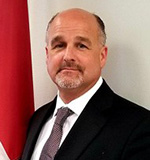
Northern Affairs Organization
Assistant Deputy Minister
Serge Beaudoin
Regional offices

Yukon Region
Regional Director General
Dionne Savill

Northwest Territories Region
Regional Director General
Matthew Spence

Nunavut Region
Regional Director General
David Rochette

Policy and Strategic Direction
Senior Assistant Deputy Minister
Jeff Moore

Treaties and Aboriginal Government
Senior Assistant Deputy Minister
Joe Wild

Implementation
Assistant Deputy Minister
Ross Pattee

Resolution and Modern Governance
Assistant Deputy Minister
Martin Reiher

Chief Finances, Results and Delivery Officer
Annie Boudreau

Corporate Secretariat
Corporate Secretary
Kate Ledgerwood

Human Resources and Workplace Services
A/ Director General
Geoff Zerr

Communications
Director General
Aruna Sadana

Audit and Evaluation
Chief Executive
Stephanie Barozzi
Financial overview
Crown-Indigenous Relations and Northern Affairs Canada's 2019-20 main estimates total $7 billion and are comprised of:
- approximately $3.3 billion or 48% in operating expenditures
- approximately $2.7 billion or 38% in transfer payments to Indigenous organizations
- approximately $0.9 billion or 13% for various Budget 2019 initiatives
- approximately $5.5 million in capital expenditures
- $56 million in loan funding for claimants involved in negotiations
Operating expenditures
Through operating funding, the Department also carries out activities related to the assessment, management and remediation of federal contaminated sites, and continues to meet obligations pursuant to the Indian Residential Schools Settlement Agreement. Operating expenditures include time-limited funding of $2.0 billion for Childhood Claims settlement and $750.0 million for the Sixties Scoop settlement.
Transfer payments
Through transfer payments, the Department settles and implements comprehensive land claims and self-government agreements, resolves specific and special claims and expeditiously addresses legal rights, supports negotiation and implementation processes, supports lands and environmental management and economic development, and advances work in the North.
Some of Crown-Indigenous Relations and Northern Affairs Canada's major transfer payments are:
- $681.7 million in Grants to First Nations to settle specific claims negotiated by Canada and/or awarded by the Specific Claims Tribunal, and to Indigenous groups to settle special claims
- $674.2 million in Grants to implement comprehensive land claims and self-government agreements and other agreements to address Section 35 Rights
- $397.8 million in Contributions to support the negotiation and implementation of Treaties, Claims and self-government agreements or initiatives
- $167.7 million in Contributions to support Land Management and Economic Development
- $113.7 million in Contributions to First Nations for the management of contaminated sites
- $112.4 million in Contributions for promoting the safe use, development, conservation and protection of the North's natural resources, and promoting scientific development for Indigenous Peoples and the North
- $93.3 million in Contributions to support access to healthy foods in isolated northern communities
As per Order in Council P.C. 2019-1109, some branches and sectors have been transferred from Crown-Indigenous Relations and Northern Affairs Canada to Indigenous Services Canada. This transfer has not been reflected in the figures above as it is still being finalized.
Northern Affairs Organization
The Northern Affairs Organization has a total budget of $537.4 million split between headquarters, and regional offices in the three territories. The majority of the budget is directed to transfer payments in support of Northern Affairs Organization programs notably the Northern Contaminated Sites Program. $395.4 million is managed in Headquarters, $10.1 million in Northwest Territories region, $12.1 million in Nunavut region and $117.8 million in Yukon Region.
Human resources overview
Crown-Indigenous Relations and Northern Affairs Canada has its main base of operations in the National Capital Region. It also has a presence across the country in regional offices. There are a total of 2,010 employees in the Department, of which 1,382 work in the National Capital Region. Of the 628 employees based in regions, 334 are based in the Northern regional offices, representing not only the Northern Affairs Organization but also the Treaties and Aboriginal Governments and Implementation sectors.
The northern regional landscape
Crown-Indigenous Relations and Northern Affairs Canada's Northern regional offices in Whitehorse, Yellowknife and Iqaluit support northern Canadians in their efforts to improve social and economic well-being to develop healthier, more sustainable communities and to participate more fully in Canada's political, social and economic development. The regional office in Whitehorse in Yukon has 100 employees, while the Northwest Territories office in Yellowknife has 114 employees, and the Nunavut office in Iqaluit has 120 employees.
Impact of the dissolution of Indigenous and Northern Affairs Canada
Subsequent to the announcement of the dissolution of Indigenous and Northern Affairs Canada and the establishment of Crown-Indigenous Relations and Northern Affairs Canada and Indigenous Services Canada, units supporting the specific mandates of the new departments were transferred between them. As part of the establishment of both Crown-Indigenous Relations and Northern Affairs Canada and Indigenous Services Canada, a shared service model was established where some corporate level activities are to be shared between both departments, including Human Resources and Communications functions. These shared services have reduced the overall percentage of internal services available for the departments.
What we do
As noted in the introduction, one of Crown-Indigenous Relations and Northern Affairs Canada's primary roles is to support the Minister of Northern Affairs in leading the federal government's work in the North. Crown-Indigenous Relations and Northern Affairs Canada advances nation-to-nation relationships and reconciliation objectives, and leads on Northern programming and Arctic policy.
The topics discussed in this section present an overview of the current business lines of the Department relating to Northern Affairs, the work to date on leading files and, the degree of advancement in the development of new policies.
Northern governance
A focus of the Department has been the improvement of governance structures and mechanisms in the Canadian North. A key activity in this area has been the transfer of federal responsibilities for lands and natural resources to territorial governments (called "devolution") to ensure greater local control, as well as fostering effective relations with territorial and Inuit governments.
Crown-Indigenous Relations and Northern Affairs Canada also works with Inuit organizations and other territorial partners to help meet the needs and interests of Northerners in areas such as food security, hospital and physician services in Nunavut and the Northwest Territories, economic development, climate change and reduced reliance on diesel.
Northern strategic and science policy
The Northern Affairs portfolio has long played a central role in supporting scientific research and technology in the North through programs and infrastructure to ensure domestic and international policy on key northern issues is better informed by a scientific knowledge base. Work in this area includes: researching and monitoring contaminants and their impacts on the ecosystem and human health through the Northern Contaminants Program; assessing, managing and communicating scientific data and results, and contributing expertise to help inform public policy making and international controls on certain contaminants; and supporting the maintenance of the Canadian High Arctic Research Station, Canada's scientific research station in Cambridge Bay, Nunavut.
In its Northern strategic policy role, the Department also conducts research into socio-economic priority areas within the Arctic and North and supports Canada's role in international circumpolar affairs.
Food security
Improving food security is a complex challenge requiring collaboration across many departments and various levels of government. As part of this effort, Crown-Indigenous Relations and Northern Affairs Canada is working with northern Indigenous partners to develop programs and policies that strengthen nutritional choices, food security, and community health.
These efforts include direct, targeted measures to reduce the cost of food for consumers, develop local food systems, ensure the safety of country and traditional food, and diversify transportation options in remote communities. However, food security issues will also require indirect measures to address poverty, access to education and skills training.
Crown-Indigenous Relations and Northern Affairs Canada leads Nutrition North Canada, a subsidy program aimed at making perishable, nutritious food more accessible and affordable than it otherwise would be, in isolated Northern communities. Nutrition North Canada subsidizes a list of eligible food and other items. The program works with an Indigenous Working Group and an Inuit-Crown Food Security Working Group.
Northern land, resources and environmental management
While striving to increase the transfer of federal responsibilities to territorial governments, the federal government, through the Department's administration of Northern Affairs, retains responsibility over some lands and resources in the North. As a result, several programs and policies focus on the management, sustainable development and regulatory oversight of the land, water, natural resources, and environment of the North. Northern Affairs also manages the Department's role as the Government of Canada's natural resource manager in Nunavut and the northern offshore and its post-devolution responsibilities in the Northwest Territories and Yukon. Of specific note, this involves: managing oil and gas resources development; supporting the sustainable management of active mineral exploration and development; supporting the sound management of contaminated sites and the few remaining Crown-Indigenous Relations and Northern Affairs Canada-managed land and water areas in the North; and ensuring the completion of territorial land-use planning including zones for conservation, development and other uses.
Climate change
Northern Affairs is responsible for delivering programs to support Indigenous and northern communities with assessing climate change risk, adaptation planning, long-term climate monitoring and implementation of clean energy and energy efficiency projects.
Crown-Indigenous Relations programs with important roles in the North
Renewal of Crown-Indigenous relationships
The historic relationship between the Government of Canada and First Nation, Inuit and Métis peoples has been challenging and complex. The Department has sought to establish new approaches to rejuvenate this relationship and find a constructive path forward to advance Indigenous economic and social participation and self-determination. A key element of this approach has been to engage organizations representing First Nations, Inuit and Métis in high level meetings to discuss priorities and interests, through mechanisms such as the Inuit-Crown Partnership Committee.
Negotiation of comprehensive land claims, specific claims and self-government agreements
Many treaties were concluded between the Crown and Indigenous peoples prior to Confederation to address Indigenous rights and interests, but there remains a significant number of communities with outstanding claims and interests to lands and resources. Some claims are addressed by comprehensive land claims agreements, often called "Modern Treaties", to resolve outstanding Indigenous interest to lands and resources, while other claims address grievances of improper administration of lands and assets or treaty obligations and are addressed through the Specific Claims process.
Self-government agreements, on the other hand, are to establish local governance by communities outside of other regimes such as the Indian Act. The Department is working in partnership with Indigenous peoples to undo federally imposed systems of governance and administration in favour of Indigenous control and delivery. The Department is working to address outstanding claims through improved collaboration between governments and Indigenous groups, based on mutual respect, trust, understanding, shared responsibilities, accountability, dialogue and negotiation concerning the rights and interests of Indigenous peoples. The Department coordinates the federal government's interests in these negotiations.
Management and Implementation of Existing Agreements and Treaties
Of the many Modern Treaty agreements that have been concluded since the 1970s, several have resulted in court rulings indicating failures in Canada's implementation of modern and historic treaties. The Department provides oversight on the efficient implementation of settlement agreements and treaties, creating and maintaining ongoing partnerships to support this goal.
As a result of court rulings citing shortcomings relating to infringement of Aboriginal and treaty rights, Crown-Indigenous Relations and Northern Affairs Canada also supports federal departments and agencies to fulfill the Crown's legal duty to consult Indigenous peoples whose asserted or established Aboriginal or treaty rights may be impacted by a federal activity, and coordinates the federal approach to the United Nations Declaration on the Rights of Indigenous Peoples.
Issues currently in the public eye
The following issues may be raised by the public or partners in the early days of the mandate. I will be pleased to brief you on these and other more forward looking issues over the coming weeks.
Northern Affairs
Arctic and northern policy framework
- The Arctic and Northern Policy Framework was announced and released on September 10, 2019. The federal Framework includes a co-developed policy statement, an International chapter (led by Global Affairs Canada) and a Safety, Security, and Defence chapter (led by the Department of National Defence). An Inuit Nunangat chapter, and chapters developed by the governments of the Northwest Territories and Nunavut, were released on the same day and outline the priorities of those co-development partners.
- The Government of Canada engaged extensively with Indigenous partners and Territorial and Provincial governments (Yukon, Northwest Territories, Nunavut, Manitoba, Quebec, and Newfoundland and Labrador). Canada's Arctic Council Advisory Committee has also been engaged in discussions of international priorities and participated in drafting of the International Chapter.
- Implementation will be supported by existing and new measures, including federal investments announced in Budget 2019. This included new funding to diversify post-secondary educational options in the territories, enhance infrastructure resources to connect Northern and remote communities and support clean energy production, increase economic development programming, enable critical Arctic research, and enhance Canada's global Arctic leadership.
Considerations:
- It is expected that negotiations will begin in early 2020 to establish governance mechanisms and an implementation plan.
Contaminated sites
- For the past 15 years, the Northern Contaminated Sites Program has been addressing the environmental risks associated with contaminated sites under the custodial responsibility of Crown-Indigenous Relations and Northern Affairs Canada.
- Federal Budget 2019 invested $2.2 billion over 15 years in the Crown-Indigenous Relations and Northern Affairs Canada Northern Abandoned Mine Reclamation Program, starting in 2020-2021.This program will address the eight largest and highest risk abandoned mines in Yukon and the Northwest Territories that resulted from historic mining and oil and gas activities, and includes funding for the Giant and Faro Mine Remediation Projects.
- Federal Budget 2019 also provided funding for the renewal of the Federal Contaminated Sites Action Plan, starting in 2020-2021. Crown-Indigenous Relations and Northern Affairs Canada will receive $188 million over five years in order to address an additional 89 contaminated sites.
Considerations:
- Crown-Indigenous Relations and Northern Affairs Canada currently has an inventory of 164 contaminated sites, which represents an environmental liability of $3.3 billion in the public accounts of Canada.
- The Northern Contaminated Sites Program and the Northern Abandoned Mine Reclamation Program will continue to promote new economic opportunities for Indigenous people and Northerners, building on the expertise gained over 15 years of managing contaminated sites remediation projects in the North. The Northern Abandoned Mine Reclamation Program will allow for longer-term remediation contracts, which provide greater certainty for affected communities and economic opportunities for Indigenous people and Northerners. Specifically, the Giant Mine Remediation Project has developed and is implementing a socio-economic strategy to ensure Northerners and Indigenous people are positioned to benefit from employment opportunities that result from the remediation.
- Crown-Indigenous Relations and Northern Affairs Canada will continue to work closely with Public Services and Procurement Canada to refine procurement mechanisms and develop new, more flexible approaches to procurement to ensure Indigenous and northern communities can benefit from its contaminated sites projects.
Northern and Indigenous clean energy and climate change
- The climate in Canada is warming at approximately twice the global average; in Canada's North the rate of warming is almost three times the global average. Indigenous communities in the North and across Canada are among the most vulnerable to climate change impacts due to their often remote physical locations and dependence on the natural environment for their economic, social, cultural and spiritual well-being.
- The 2016 Pan-Canadian Framework on Clean Growth and Climate Change makes a commitment to strengthen collaboration with Indigenous Peoples on mitigation and adaptation actions, based on recognition of rights, respect, cooperation and partnership. To this end, bi-lateral distinctions-based tables with the three National Indigenous Organizations were established as a platform for discussions on climate change.
- Crown-Indigenous Relations and Northern Affairs Canada administers five programs related to climate change and clean energy in Indigenous and Northern communities: Climate Change Preparedness in the North, First Nation Adapt, Indigenous Community-Based Climate Monitoring and Northern Responsible Energy Approach for Community Heat and Electricity.
Considerations:
- Crown-Indigenous Relations and Northern Affairs Canada is working interdepartmentally to improve federal collaboration around climate change programming, support strategic priorities, improve Indigenous access to funding, and address gaps in knowledge and funding support.
- The Department is supporting First Nations, Métis and Inuit peoples through the work of distinctions-based tables to advance their priorities and plans to address the impacts of climate change, reduce their carbon footprint and move towards energy sustainability and act as leaders within the context of national and global efforts.
Mary River Phase 2
- The Mary River Project is an operating open pit iron mine located on northern Baffin Island in the Qikiqtani Region of Nunavut. The mine site is connected to a port at Milne Inlet via the 100 km-long Milne Inlet Tote Road.
- Originally approved in 2012, Baffinland Iron Mines Corporation has proposed a number of amendments in order to increase the viability of the project. The Nunavut Impact Review Board is now reviewing Baffinland Iron Mines Corporation's Phase 2 application to increase the quantity of ore shipped annually to 12 million tonnes per annum (currently 6 million tonnes per annum), construct a new railway north from the mine to Milne Inlet port, extend the marine shipping season and construct associated facilities to support increased mining and shipping.
- A number of organizations, notably the Qikiqtani Inuit Association, have explicitly recommended against increasing the production limit in their final written submissions. Others have raised concerns with respect to the completeness of evidence on the impact on marine mammals.
- Following the receipt of the Nunavut Impact Review Board's report, the Minister will have 90 days either to accept, reject or vary the terms and conditions on behalf of the other responsible ministers (Fisheries and Oceans, Natural Resources and Transport). The final hearing is underway but was adjourned and a motion was made to adjourn for eight to twelve months due to consultation and technical information deficiencies. Parties have until November 22 to comment on the motion, after which the Board will decide on the next steps. Baffinland, however, has indicated the need for a decision in February 2020 in order to hit production targets.
Mackenzie Valley Resource Management Act – Transfer of authorities
- Canada devolved administration and control over lands, waters and resources to the Government of the Northwest Territories in 2014 through the Northwest Territories Land and Resources Devolution Agreement (Devolution Agreement). Legislative control of the Mackenzie Valley Resource Management Act largely remained federal, with the exception of water use regulation rules on territorial and private lands, with some functions delegated to the territorial government.
- The Devolution Agreement included a commitment to conduct a review of the provisions of the agreement relating to the Mackenzie Valley Resource Management Act "no earlier than five years after the transfer date" (no sooner than April 1, 2019) and that all Parties to the Agreement are to develop the terms of the Review.
- The territorial government wishes to initiate the Devolution Agreement Review process in order to shift legislative authorities for resource management to territorial law. They are seeking a full transfer of authorities.
Considerations:
- Views of the other Parties to the Agreement on the timing and terms of the review are unknown at this time.
Arctic offshore oil and gas
- In December 2016, Canada and the United States of America issued a Joint Arctic Leaders' Statement designating all Canadian Arctic waters as indefinitely off limits to future offshore Arctic oil and gas licensing (known as a moratorium), to be reviewed every five years through a climate and marine science-based life-cycle assessment.
- In October 2018, Canada launched a three-prong Arctic offshore oil and gas strategy to freeze oil and gas licences during the moratorium, co-develop with northerners a five-year science-based assessment, and negotiate oil and gas co-management in the Beaufort Sea.
- The current President of the United States, Donald Trump, tried to revoke the moratorium, but a United States District Court ruled that unlawful, a decision which is pending appeal. Canada remains committed to the Leaders' Statement and Arctic offshore oil and moratorium, to be tested every five years through a science-based review.
Considerations:
- Canada is working closely with territorial and Northern Indigenous governments to co-manage the Arctic offshore, including development of the five-year science-based assessment to be completed by the end of 2021, negotiating a Beaufort Sea oil and gas co-management and revenue sharing agreement with the governments of Yukon and the Northwest Territories and the Inuvialuit Regional Corporation, and preserving existing oil and gas rights in the Beaufort Sea during the science-based assessment.
Nunavut Devolution
- Nunavut remains the last territory without control of its own lands and resources. Completing devolution in Nunavut would support reconciliation and permit Canada to focus on other core federal responsibilities in Nunavut, such as land claim implementation and economic development.
- On August 15, 2019, the Nunavut Lands and Resources Devolution Agreement-in-Principle was signed by the Premier of Nunavut, the President of Nunavut Tunngavik Incorporated, and the Minister of Crown-Indigenous Relations. The next step is the negotiation of the Final Devolution Agreement.
- Crown-Indigenous Relations and Northern Affairs Canada has a three-year mandate (from June 2019) to negotiate a Final Devolution Agreement. In addition, the Minister of Finance has a mandate to negotiate a net fiscal benefit arrangement pertaining to the treatment of resource revenue to be included in the Final Agreement.
- Implementation of the Final Agreement, with the actual transfer of resources, personnel, properties and assets from Canada to the Government of Nunavut, would mark the completion of the final phase of devolution, concluding at the effective date of devolution targeted for April 1, 2025.
- Post-Devolution, the Minister will still have a limited, but active, role in Nunavut, including the administration of contaminated sites, management of the offshore resources, appointing members to boards of Institutions of Public Governments, and land claims negotiations.
Food security
- Food insecure households are those that are uncertain of having, or unable to acquire, enough food to meet the needs of all their members. Food insecurity in Northern and isolated communities poses significant challenges which directly affect the health and well-being of Northerners.
- The Government of Canada has a number of programs and initiatives aimed at strengthening nutritional choices, food security, and community health, such as Nutrition North Canada, the Harvester's Support Grant, and Canadian Northern Economic Development Agency's Community Innovation Initiative.
Considerations:
- Addressing food security requires collaboration with Northern partners and a set of direct and indirect measures to improve access and affordability through a range of local and transported goods. It will also require indirect measures to address poverty, access to education and skills training.
- One of these direct targeted measures is the new Harvester's Support Grant, which recognizes the importance that country food plays in addressing food security. The grant will increase access to country food by providing financial support for traditional hunting and harvesting. Nutrition North Canada is currently working to gain final federal approval for the Grant, which was announced in the 2018 Fall Economic Statement and has been co-developed with Indigenous partners.
Northern and Indigenous partners
Territorial premiers
Northwest Territories
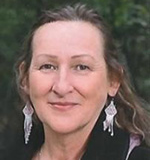
Hon. Caroline Cochrane, Premier and Minister of Executive and Indigenous Affairs
Contact Information: (867) 767-9141
Caroline Cochrane, Member of the Legislative Assembly for Yellowknife's Range Lake district, was elected Premier of the Northwest Territories on October 24, 2019. She has previously served as Minister of Education, Culture and Employment, Minister of Housing and of Municipal and Community Affairs, and Minister of the Status of Women.
Nunavut
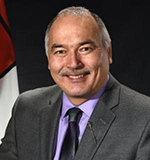
Hon. Joe Savikataaq, Premier and Minister of Aboriginal Relations
Contact Information: 867-975-5050
The Honourable Joe Savikataaq was re-elected in the general election held on October 30, 2017, to represent the constituency of Arviat South in the 5th Legislative Assembly of Nunavut. Mr. Savikataaq was elected to serve on the Executive Council during the November 17, 2017, proceedings of the Nunavut Leadership Forum. Minister Savikataaq was formally sworn into office on November 21, 2017.
Mr. Savikataaq was elected Nunavut's fifth Premier during the June 14, 2018, proceedings of the Nunavut Leadership Forum.
Yukon

Hon. Sandy Silver, Premier
Contact Information: 867-393-7007
Sidney Alexander "Sandy" Silver is a Canadian politician, the ninth and current Premier of Yukon since 2016. He was first elected to the Yukon Legislative Assembly in the 2011 election. He represents the electoral district of Klondike and is Leader of the Yukon Liberal Party.
Inuit Tapiriit Kanatami

Founded in 1971, Inuit Tapiriit Kanatami is the national voice of approximately 55,000 Inuit living primarily in 53 communities in four Inuit land claim regions (Inuvialuit Settlement Region – Northwest Territories, Nunavut, Nunavik – Northern Quebec, and Nunatsiavut – Northern Labrador). Inuit Tapiriit Kanatami represents and promotes the interests of Inuit on a wide variety of environmental, social, cultural, and political issues. Inuit Tapiriit Kanatami's Board is made up of the Presidents of Inuit Tapiriit Kanatami, and the four Inuit land claim organizations (Nunavut Tunngavik Incorporated, Makivik Corporation, the Nunatsiavut Government and the Inuvialuit Regional Corporation) as well as the President of Inuit Circumpolar Council (Canada). The presidents of the National Inuit Youth Council and Pauktuutit Inuit Woman of Canada are ex-officio members.
President: Natan Obed
Contact Information: Redacted
Mr. Obed was re-elected to a three-year term as President of Inuit Tapiriit Kanatami in 2018. In the 1990s, Mr. Obed left his home in Nain, Nunatsiavut, to get a bachelor's degree in English and American Studies at Boston's Tufts University. After that he went to work for the Labrador Inuit Association, helping negotiate an Inuit impacts and benefits agreement with respect to the Voisey's Bay nickel mine. From there, he served nearly two years as Inuit Tapiriit Kanatami's director of socio-economic development before moving to Iqaluit to become director of social and cultural development for Nunavut Tunngavik Incorporated.
Pauktuutit Inuit Women of Canada
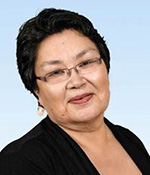
Pauktuutit Inuit Women of Canada is a National Indigenous Organization whose purpose is to represent and speak at the national level, on behalf of Inuit women in Canada.
President: Rebecca Kudloo
Contact Information: 613-238-3977
Rebecca Kudloo is the President of Pauktuutit Inuit Women of Canada. She was born on the land outside Iglulik, Nunavut, and now lives in Baker Lake, Nunavut. Rebecca speaks Inuktitut and English fluently and enjoys working with people of all ages. She was first elected as President in 2014 and previously served on the Pauktuutit Board as the Vice President and Regional Director for the Kivalliq region of Nunavut. As President, she represents Pauktuutit on the Board of Directors of Inuit Tapiriit Kanatami and Inuit Circumpolar Council Canada.
Inuit Circumpolar Council
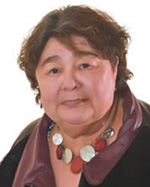
The Inuit Circumpolar Council in Canada is a non-profit organization led by a board of directors comprising the elected leaders of the four land-claims settlement regions: Inuvialuit, Nunatsiavut, Nunavik, and Nunavut. An elected executive, including a president, two vice-presidents, and a secretary-treasurer, manages the organization. Staff members are responsible for day-to-day operations, under the direction of the executive director. The land-claims regions provide core funding; however, raising additional resources to pursue the objectives of Inuit Circumpolar Council (Canada) and implement its projects remains an important responsibility for the executive and staff.
President: Monica Ell-Kanayuk
Contact Information: 613-563-2642
icc@inuitcircumpolar.com
Monica Ell-Kanayuk was elected in a by-election to the 3rd Legislative Assembly of Nunavut in September 28th, 2011 to the riding of Iqaluit West. In the 3rd Assembly Mrs. Ell-Kanayuk served as Minister of Family Services, Minister responsible for Homelessness, Minister responsible for the Qulliq Energy Corporation and Minister responsible for the Status of Women. She has also served on a number of boards, including the Nunavut Economic Forum, Baffin Regional Chamber of Commerce, Pauktutiit Inuit Women's Association, and Atuqtuarvik Corporation. She currently holds a board member seat with the Nunavut Business Credit Corporation.
Assembly of First Nations
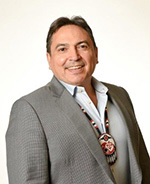
The Assembly of First Nations is a national advocacy organization representing over 634 First Nation communities (over 900,000 people) across the country. The Assembly of First Nations holds that First Nations' unique and special relationship with the Crown is grounded in inherent and Aboriginal rights in title, treaties and negotiated agreements.
National Chief: Perry Bellegarde
Contact Information: Redacted
Perry Bellegarde was elected the Assembly of First Nations National Chief in 2014 and re-elected in 2018. He has spent his entire adult life putting into practice his strong beliefs in the laws and traditions instilled in him by the many Chiefs and Elders he has known over the years. Passionate about making measureable progress on the issues that matter most to First Nations people, National Chief Bellegarde is a strong advocate for the implementation of Inherent Aboriginal and Treaty Rights. Widely known as a consensus builder with a track record of accomplishment, he brings community people, leaders, Chiefs and Elders together to focus on working cooperatively to move issues forward.

Yukon Regional Chief: Kluane Adamek
Contact Information: 867-393-9227
KAdamek@afn.ca
Kluane Adamek was sworn in as the Assembly of First Nations Yukon Regional Chief on June 28, 2018, having held the interim position since January 2018. Regional Chief Adamek is committed to working with Yukon First Nation Chiefs and communities in bringing forward their priorities and interests forward on the national level, at their direction.
Regional Chief Adamek's professional experience includes leading education initiatives at the Council of Yukon First Nations, building partnerships with Northern communities and all levels of government for Northwestel, and serving as an Advisor to former Assembly of First Nations National Chief Shawn A-in-chut Atleo. Recently she has served as Executive Assistant and Advisor to Hon. Pauline Frost, Minister of Health and Social Services, Environment and Housing for the Government of Yukon, and worked for Assembly of First Nations National Chief Perry Bellegarde.
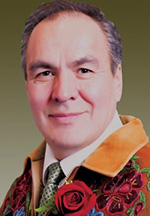
Northwest Territories Regional Chief: Norman Yakeleya
Contact Information: 867-873-4081
nyakeleya@afn.ca
Norman Yakeleya first began his political career on the municipal level as a city councillor for the Yellowknife City Council from 1987 until 1990. He then served as Chief of the Tulita Dene Band and Chairman of the Sahtu tribal Council. Norman Yakeleya was first elected to the Northwest Territories Legislature in the 2003 Northwest Territories general election defeating four other candidates to win his first term in office. He was re-elected to his second term in office in the 2007 Northwest Territories general election by acclamation. He is now the Dene national chief and the Regional Chief of the Northwest Territories.
Council of Yukon First Nations
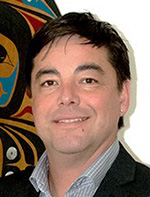
The Council of Yukon First Nations is a non-profit society working for the First Nations of Yukon. They have been in existence since 1973 and continue to serve the needs of First Nations within Yukon and the MacKenzie Delta. The Council of Yukon First Nations mandate is to serve as a political advocacy organization for Yukon First Nations holding traditional territories, to protect their rights, titles and interests.
Grand Chief of the Council of Yukon First Nations: Peter Johnston
Contact Information: 867-393-9200 ext. 9224
peter.johnston@cyfn.net
Peter Johnston was elected Grand Chief of the Council of Yukon First Nations in June, 2016. Peter is a member of the Teslin Tlingit Council and a member of the Yanyedi clan. Peter's 12 years of service in Teslin Tlingit Council Government has provided him opportunities to sit in many capacities ranging from Education, Investments to Economic Development. He has several years of proven leadership abilities at the highest levels of First Nations Governance.
Mayors of northern capitals
Regional Placemats
Nunavut
Presented By
CIRNAC Nunavut Region: Nunavut 101
A territorial overview
Capital City – Iqaluit
Nunavut ᓄᓇᕗᑦ ᐅᓪ (Our land)
Population: 38,787
Part of Inuit Nunangat, The homeland of Inuit
Nunavut's infrastructure deficit
- 25 remote communities are only accessible by air and sea (seasonally) which significantly increases the cost of building and maintaining infrastructure.
- With no road access between communities each require separate systems for water, sewage, electricity, airports and health facilities (with much infrastructure aging and in need of repair).
- Over 50% of Inuit do not have basic housing needs fulfilled, creating over-crowding which contributes to various health issues such as: infant mortality, tuberculosis and mental health.
- Nunavut relies exclusively on satellite networks for its connectivity needs. Telecommunication infrastructure lags behind much of Canada with lack of high speed internet.
The Nunavut Agreement
The Nunavut Agreement was signed in 1993 by the Government of Canada, the territorial government and Inuit of Nunavut. The Nunavut Agreement creates obligations for the federal and territorial governments, as well as the Designated Inuit Organizations, and through its implementation, promotes Nunavut's economic, social and political development.
The Nunavut Agreement contains 42 articles outlining different rights and responsibilities for the federal and territorial governments and Inuit. Broadly, the Nunavut Agreement is a comprehensive agreement which addresses a wide range of issues such as wildlife, resource development, governance, and general monitoring.
Nunavut's Economy
Nunavut's mixed economy has significant potential and is currently underdeveloped. It includes traditional land use activities, expanding mining and fisheries industries, and other sectors such as arts and crafts, film and tourism. Nunavut also boasts a relatively large public sector.
Growth in the territory's economy depends on the development of transportation infrastructure, the development of a robust community-based business sector, the responsible development of mineral and petroleum resources, and the development of a skilled local workforce.
Inuit Organizations
Nunavut Tunngavik Incorporated is the representative of the Inuit of Nunavut with three affiliated Regional Inuit Associations which are: the Kitikmeot Inuit Association, Kivalliq Inuit Association and Qikiqtani Inuit Association, who manage Inuit owned lands and social programs.
Nunavut Demographics and Geography
Nunavut comprises roughly 20% of Canada's land mass with a population spread out over 25 communities, which range in size from a few hundred to almost 8,000 in the capital of Iqaluit. In addition, Nunavut is split into three administrative regions; the Qikiqtani region in the east, the Kivalliq region, north of Manitoba and west of Hudson's Bay, and the Kitikmeot region to the north-west and bordering the Northwest Territories.
The Government of Nunavut
The Government of Nunavut, established in 1999, is a public government that functions on a consensus model, with no political parties.
The Government of Nunavut is in its fifth mandate and is currently led by Premier Joe Savikataaq who was elected on October 30, 2017.
The Government's mandate is Turaaqtavut, which means heading towards a goal and it focuses on:
- Individual and community self-reliance and well-being (Inuusivut)
- Developing infrastructure and growing the economy (Pivaallirutivut)
- Preparing people for good jobs (Sivummuaqpalliajjutivut)
- Strengthening Nunavut as a distinct territory in Canada and the world (Inuunivut)
- Working in partnership to advance the goals and aspirations of Nunavummiut (Katujjiqatigiinnivut)
The 2019-2020 budget forecasts a modest deficit of $12 million on revenues of $2,162 million.
Other Indigenous Groups
The Nunavut Regional Office also collaborates on two other modern treaties: the Nunavik Inuit Land Claims Agreement and the Eeyou Marine Region Land Claims Agreement, as well as ongoing negotiations with the Ghotelnene K'odtineh Denesuline and Athabasca Denesuline.
| Total | Inuit |
|---|---|
| 38,787 | 32,969 |
| 100% | 85% |
Population density: 1 person per 70 km2
Nunavut Inuit comprise 50% of Inuit Nunangat population.
75% of residents speak Inuktitut as their first language.
About Us: Crown-Indigenous Relations and Northern Affairs Canada, Nunavut Region
- 123 Full-time employees (45% Nunavut Inuit)
- Regional office: Iqaluit
- District offices: Cambridge Bay, Kugluktuk and Rankin Inlet
- $52.4 Million Approximate budget
In 2018/2019:
- $3.5 Million CIRNAC grants and contributions
- $4.7 Million ISC grants and contributions
- $8.8 Million capital
- $35.4 Million Regional operation and maintenance
- 3 Land claim agreements being implemented
RDG: David Rochette
Key Priorities
Resource Management, Environmental Protection
- As part of the Nunavut Agreement, the Nunavut Regional Office participates in the co-management regulatory framework in accordance with the Nunavut Planning and Project Assessment Act and the Nunavut Waters and Surface Rights Tribunal Act through land use planning, impact assessments and water resource management.
- Fulfilling legislative responsibilities regarding the administration of Crown lands and water resources, mineral resources and regulatory compliance and enforcement.
- The Nunavut Regional Office manages the remediation of contaminated sites on Crown lands and the delivery of the Northern Contaminants Program.
Implementation of the Nunavut Agreement
- Key Articles of the Nunavut Agreement which the Nunavut Regional Office is striving to implement include: Article 23 (Inuit employment levels within government), Article 24 (procurement and contracting for Inuit firms), and Article 32 (Inuit participation in the development of social and cultural policies).
- The Nunavut Regional Office continues to implement its Inuit Employment Plan to increase Inuit employment across all occupational and group levels to representative levels (~85%).
Community and Capacity Building
- Supporting the development and operation of local coalitions that bring together all levels of government and stakeholders as well as assisting communities in creating development plans that meet their respective needs.
Nunavut Devolution
- Devolution is the process of transferring province like responsibilities for the management of lands and resource in Nunavut, and related law-making powers, to the Government of Nunavut.
- The Nunavut Regional Office continues to support the devolution of lands and resources management to the territorial government. An Agreement in Principle was signed on August 15, 2019 and negotiations are underway for the final agreement.
CIRNAC: Delivering ISC Services
The CIRNAC Nunavut Regional Office also delivers programs on behalf of Indigenous Services Canada: Professional and Institutional Development, Community-led Planning Initiatives, Inuit Cultural Education Centres Grant, First Nations and Inuit Summer Work Experience, First Nations and Inuit Skills Link, University and College Entrance Preparation Post-Secondary Partnerships, First Nation and Inuit Cultural Education Centres, Urban Programming for Indigenous Peoples Coalitions.
Quick Facts
- There are no reserves in Nunavut. The majority of the population is Inuit, under one modern treaty. Self-government is expressed through the territorial government.
- In 2017, people in Nunavut paid approximately 2.2 times the price in local stores for the same item compared to the rest of Canada.
- In 2018, Nunavut's GDP totaled $2.9 billion which was a 10% increase from the previous year compared to the national growth rate of 2%.
- As of 2016, the average age in Nunavut is 27.7 years old. In fact, just over 32% of Nunavut's population is under the age of 15, almost twice the national average.
- The unemployment rate, 13.9%, is 2.44 times higher than the Canadian unemployment rate.
- In 2019, Nunavut went up to the 15th rank worldwide as a good place to invest in mining.
- As of 2016, the suicide rate in Nunavut was 75.5 per 100,000 compared to the Canadian average of 10.4 per 100,000.
Northwest Territories
Presented by
CIRNAC Northwest Territories region: Northwest Territories 101
A territorial overview
Capital city – Yellowknife
City Population – 20,607 (2018)
Traditional territory of the Yellowknives Dene First Nation, the Tłı˛cho˛ First Nation, and Metis peoples of the Great Slave Lake area
Strong partnership approach
The Northwest Territories regional office supports government-wide efforts to advance reconciliation through a renewed relationship with Indigenous Peoples including obligations outlined in historic treaties and modern land, resource, and self-government agreements. The Northwest Territories regional office works with partners collaboratively and is responsive to the unique and diverse interests of territorial residents, their governments, and Northwest Territories organizations.
Treaties and agreements
All First Nations in the Northwest Territories adhered to either Treaty 8 (1899-1900) or Treaty 11 (1921-22).
- Inuvialuit, Gwich'in, and Sahtu Dene and Metis – three regional modern land and resources Treaties (Comprehensive Land Claims) are implemented; companion self-government agreements for them are in negotiation (and for the community of Deline, it is implemented).
- Tłı˛ cho˛ – one regional Modern land claim and self-government Treaty is implemented.
- Dehcho Dene and Metis, Akaitcho Dene First Nations, and Northwest Territory Metis Nation – three regional Modern land, resource and self-government agreements are in negotiation.
- K'atl'odeeche First Nation – adjacent to the Town of Hay River, is a community on reserve lands established in 1973 pursuant to Treaty 8. K'atl'odeeche First Nation is negotiating various outstanding land and resource matters, including having recently settled its Treaty 8 agricultural benefits claim.
- Salt River First Nation – settled a Treaty 8 Treaty Settlement Agreement in 2002 to provide financial compensation and establish reserve lands adjacent to the community of Fort Smith. Work continues on resolving the Band's requests for Canada to support development of its reserve lands.
- Acho Dene Koe First Nation (Fort Liard) – one community-based Modern land, resources and governance Treaty for the Dene and Métis members is in negotiation as it left the Dehcho Process in 2015.
- North Slave Metis Alliance – this group has requested negotiation of a distinct claim because it is a political splinter group of the Great Slave Lake area Métis people (who are otherwise represented by the Northwest Territory Métis Nation).
- Nacho Nyak Dunn (Yukon), Athabasca Denesuline (Saskatchewan). Ghotelnene K'odtineh Dene (Manitoba) – three transboundary and resource claims in negotiation.
Transformation – Implementation
We will continue our transformation journey, establishing the capabilities essential to negotiate new Recognition of Indigenous Rights and Self-Determination agreements, and for the Recognition and Implementation of Indigenous Rights Framework taking shape, as we strive to fulfill our commitment to Indigenous peoples.
ISC programs and services supported or delivered by the Northwest Territories Regional Office include:
- Urban Programming for Indigenous People
- Registration, Wills and Estates Administration
- Indigenous Governance and Capacity Funding – Band Support, Band Employee Benefits, Tribal Councils, Professional and Institutional Development, and Consultation and Policy Development
- First Nations and Inuit Youth Employment Strategy (includes summer student and skills link programs)
- Cultural Education Centres
- University and College Entrance Preparation
- On-reserve Housing and Community Infrastructure
- On-reserve Emergency Management Assistance
- First Nation Lands Management Act
- Lands and Economic Development
- Delivering health services and benefits responsive to the needs of First Nations and Inuit communities and individuals.
CIRNAC and ISC total Grants and Contributions (2018/2019)
$43,844,792
- Education
- Government and Institutions
- Northern Governance and People
- Land/Resource/Environment – $12.68M
- Aboriginal Rights and Interests
- Community Development
- North Science and Technology
- Other Grant and Contributions (not shown on the chart), Infrastructure and Capacity, First Nation Individual Affairs, Urban Aboriginals
Next steps
- Enhancing the band management and administrative role in delivering ISC programs and services to its members;
- Working with bands to enhance effective funding administration;
- Assisting the two reserve-based bands to access appropriate infrastructure development support, improve programs and services, and utilize appropriate First Nations legislative tools;
- Supporting bands to take more effective management of Indian Affairs Branch lots to support their residential and other needs; and
- Collaborating with bands, Indigenous organizations and the territorial government to ensure community well-being and sustainability.
About us: Crown-Indigenous Relations and Northern Affairs Canada, Northwest Territories Region
(Fiscal Year 2019/2020)
- 96 Full-time Employees
- $41.5M Total Expenditures
- $20.5M Grants and Contributions
- $7.7M Salary and Operating
- $13.3M Contaminated Sites
- B-base Project Funding
RDG: Matthew Spence
What we do
The Northwest Territories regional office of Crown-Indigenous Relations and Northern Affairs Canada reports through the Assistant Deputy Minister of Northern Affairs. It also delivers certain programs for Indigenous Services Canada.
CIRNAC and ISC programs and services benefit Inuvialuit, Métis, and Dene individuals, governments, regional bodies and communities (some with modern treaties and/or self-government agreements – with a particular focus on the 21 Indian Act bands and registered Indians).
The NWT regional office:
- Coordinates its responsibilities to support community well-being and sustainability;
- Fosters intergovernmental relationships;
- Facilitates the reconciliation and resolution of Indigenous rights issues;
- Delivers ISC programs to Northwest Territories Indigenous partners;
- Maintains the regional relationship with resource management boards, including administering the board member appointments process;
- Manages federal resources and lands, including inspections and certain reserve lands administration matters, and other initiatives related to environmental matters;
- Supports the Minister's role to promote political and social development of the territory;
- Reclaims and manages contaminated sites in the Northwest Territories and delivers the Northern Contaminants Program. CIRNAC is custodian of 76 active sites in different stages of remediation and 26 others requiring assessment and planning to determine future action; and
- Supports the negotiation and implementation of modern treaties.
Facts about the region
Northwest Territories:
- Capital – City of Yellowknife (founded in 1934, designated the territorial capital in 1967)
- Area – 1,171,918 km2
- Date of Creation – July 15, 1870
- Communities – 33
- Regions – 5 (Inuvik, Sahtu, Dehcho, North Slave, South Slave)
- Population: 44,420 (April 2019), 50% Indigenous, 50% Non-Indigenous (2016), 33% Dene 11% Inuit and 6% Metis (2016)
- Language: 11 Territorial Official Languages 9 Indigenous languages belonging to three language families: Dene, Inuit, and Cree.
Government of the Northwest Territories:
Northwest Territories and Nunavut are the only jurisdictions in Canada that use consensus government rather than party politics. The Government of the Northwest Territories' selected the Premier and Cabinet on October 24th, 2019 during its 19th Legislative Assembly.
Government of the Northwest Territories 2019-2020 budget highlighted:
- Community wellness and safety
- Economic growth, labor force development and land management
- Environment and climate change
- Governance
Regional priorities:
- Development of NWT-based models for program delivery matched to territorial, regional, and community contexts.
- Federally driven processes established collaboratively and led by NWT people.
- Federal, territorial, and Indigenous governments engaged in work to define common service delivery needs, treaty implementation, and environmental stewardship.
- Addressing governance capacity of First Nation governments through funding strategic partnerships and relationships.
- Enhancing the environment and safety of NWT residents through the reclamation of contaminated sites.
Yukon
Presented by
CIRNAC Yukon region: Yukon 101
A territorial overview
Capital city – Whitehorse
The largest city in the territories – population 32,011 (the remainder of Yukon's population is spread out among approximately 15 communities).
Located on Ta'an Kwächän council and Kwanlin dün first nation traditional territories
Quick fact: Yukon is 4.8% of Canada's land mass
Historical context
Yukon was created as an independent territory in 1898, during the Klondike Gold Rush of 1896-1899. In 2003, following devolution, amendments to the Yukon Act came into effect giving the Government of Yukon greater control and province-like powers. At the same time provincial-like powers were also being devolved to many Yukon First Nations through their land claim and self –government agreements.
Economy
Yukon has the lowest unemployment rate in Canada: July 2019 3.1% VS Canada 5.7%. This results in a tight labour market. Economic outcomes are not the same for all Yukon communities. Employment rates for…
All Yukon: 65.5%
Whitehorse: 71.3%
Rest of Yukon: 58.5%
In 2019, the Chief of Yukon's only fly-in First Nation community declared a climate change state of emergency.
"It's going to be the blink of an eye before my great grandchild is living in a completely different territory, and if that's not an emergency, I don't know what is."
First nations
First Nation people have lived in Yukon for thousands of years. There are 14 distinct First Nations in the territory and eight primary Indigenous language groups. 725 people use Indigenous languages at home in Yukon of a First Nation population of 8,195 (23.3% of Yukon population).
The Council of Yukon First Nations is a prominent advocacy group representing many, but not all, Yukon First Nations.
Yukon's infrastructure is well-developed
- 97% access to all-season roads (NT 78%, NU 0%).
- 85% access to regional energy grid (NT 50%, NU 0%).
- 92% of the territory's electricity comes from renewable sources and emissions are the lowest in Canada, decreasing by half since 1990. Mining is a significant driver of energy demand. Five communities only use diesel.
- 93% access to terrestrial backbone for Internet (NT 69%, NU 0%). High-speed access and affordability remain important connectivity issues.
Affordable housing is a challenge in Yukon and Indigenous people face greater housing challenges.
Governance landscape
Yukon is at the forefront of Indigenous Land Claims and Self Government in Canada. Eleven of the territory's 14 First Nations have settled land claim and are self-government agreements. These modern treaties were signed between 1993 and 2005, giving First Nations provincial-like jurisdiction in many areas.
The Government of Yukon is led by Premier Sandy Silver and his Liberal government, elected in November 2016.
The next territorial election will be in 2020. The Yukon Legislative Assembly consists of 19 elected members.
Population: 40,962 (YG 2019)
Indigenous population: 8,195 | 23.3% (Canada 2016)
Quick fact: In 2020, Yukon College will become Yukon university, Canada's First university north of 60
Environment, assessment and resources
- Stemming from modern treaties, Yukon has its own arms-length Environmental and Socio-economic and Assessment Board (YESAB).
- In 2017, copper, silver and gold mines were in production in the territory, along with some non-metallic mining and wood harvesting. There are five large contaminated sites being remediated in Yukon.
Sources: economics, population, housing, indigenous languages: Statistics Canada, Census of Canada, 2016 (Canada) / infrastructure data – National Aboriginal Economic Development Board and CRTR, communications monitoring report, 2017 / Yukon Bureau of Statistics, population report, first quarter, 2019 (YG)
What we do and who we work with
In CIRNAC Yukon Region, programs and services are delivered to 14 Yukon First Nations – 11 self-governing (SG) and three under the Indian Act and three Northern BC First Nations (Indian Act), the Government of Yukon, the Council of Yukon First Nations – an Indigenous Representative Organization, the Assembly of First Nations as well as numerous other organizations.
Yukon Region First Nations
Yukon
- Carcross/Tagish First Nation (SG)
- Champagne and Aishihik First Nations (SG)
- Kluane First Nation (SG)
- Kwanlin Dün First Nation (SG)
- Liard First Nation
- Little Salmon Carmacks First Nation (SG)
- First Nation of Na-Cho Nyäk Dun (SG)
- Ross River Dena Council
- Selkirk First Nation (SG)
- Ta'an Kwäch'än Council (SG)
- Teslin Tlingit Council (SG)
- Tr'ondëk Hwëch'in (SG)
- Vuntut Gwitchin First Nation (SG)
- White River First Nation
Northern British Columbia
- Daylu Dena Council
- Dease River First Nation
- Taku River Tlingit First Nation
Our key priorities 2019-2020
- Strong partnerships + advancing Indigenous self-determination
- Building a better service culture + program reform
- Supporting capacity development
- Advancing remediation of the "Big 4" contaminated sites (excluding Faro)
About us: Crown-Indigenous Relations and Northern Affairs Canada, Yukon region
- 91 Full-time employees
- $238 million approximate budget in 2018/19:
- $162m CIRNAC g&c
- $68m ISC g&c
- $8m regional o&m
- 11 land claim and self-government agreements being implemented
RDG: Dionne Savill
Facts about the region
CIRNAC: Delivering ISC services
- The CIRNAC Yukon regional office delivers a broad range of programs and services on behalf of Indigenous Services Canada (ISC), including but not limited to: Income Assistance, First Nation Child and Family Services, post-sec education, water/wastewater, housing/infrastructure, governance and capacity support, and emergency management.
- Yukon is the only ISC or CIRNAC regional office that delivers Social Assistance directly to clients (approximately 300 monthly).
Quick facts
- There are no reserves in Yukon. First Nations without land claim and self-government agreements (modern treaties) reside on what is known as "land set aside".
- 11 Yukon First Nations have signed land claim and self-government (SG) agreements with Canada and Yukon. SG agreements define the powers First Nations have to make laws and decisions to govern themselves and their settlement land in a manner that is responsive to the needs and interests of their citizens.
- 52 federal programs and services have already been devolved to self-governing Yukon First Nations.
- The Intergovernmental Forum (IGF) was established in 2002 as a political forum to discuss and act on common priorities among the CIRNAC Minister, Yukon Premier, Chiefs of 11 self-governing First Nations and the Grand Chief of the Council of Yukon First Nations. In April 2019 the ISC Minister formally joined the IGF. The Chiefs of the three Indian Act Bands are invited to IGF meetings.
- The Region is currently implementing a made-in-Yukon Indigenous Recruitment Strategy with success.
- Regional staff established a Reconciliation Working Group to decolonize work spaces, practices, and engage employees and First Nations.
- The Government of Yukon's total budget for 2019-2020 is $1.5 billion. Budget priorities include investing in housing, infrastructure, education, health services, economy and environment.
- Eagle Gold Mine near Mayo is in production and has created 250 jobs. Also expected to begin production before the end of 2019 is Alexco's Bermingham property (on the United Keno Hill Mines site).
- Successful efforts to support renewable energy in Yukon First Nations communities include the Kluane First Nation Wind Farm (REACHE $1.8M from 2016-19) and Vuntut Gwitchin Government Solar Project (REACHE $1.2M from 2016-18) which reduce dependence on diesel for power generation.
Annex A: Acts and legislation
Northern Affairs legislation
| Arctic Waters Pollution Prevention Act | R.S.C., 1985, c. A-12 |
| Canada Lands Surveys Act | R.S.C., 1985, c. L-6 |
| Canada Oil and Gas Operations Act | R.S.C., 1985, c. O-7 |
| Canada Petroleum Resources Act | R.S.C., 1985, c. 36 |
| Canadian High Arctic Research Station Act | S.C., 2014, c. 39, s. 145 |
| Dominion Water Power Act | R.S.C., 1985 c. W-4 |
| Mackenzie Valley Resource Management Act | S.C., 1998, c. 25 |
| Northern Canada Power Commission (Share Issuance and Sale Authorization) Act | S.C., 1988, c.12 |
| Northern Canada Power Commission Yukon Assets Disposal Authorization Act | S.C., 1987, c. 9 |
| Northwest Territories Act | S.C., 2014, c. 2, s. 2 |
| Northwest Territories Devolution Act | S.C., 2014, c. 2 |
| Nunavut Act | S.C., 1993, c. 28 |
| Nunavut Waters and Nunavut Surface Rights Tribunal Act | S.C., 2002, c. 10 |
| Nunavut Planning and Project Assessment Act | S.C., 2013, c. 14, s. 2 |
| Territorial Lands Act | R.S.C., 1985, T-7 |
| Yukon Act | S.C., 2002, c. 7 |
| Yukon Environmental and Socio-economic Assessment Act | S.C., 2003, c. 7 |
| Yukon Surface Rights Board Act | S.C., 1994, c. 43 |


